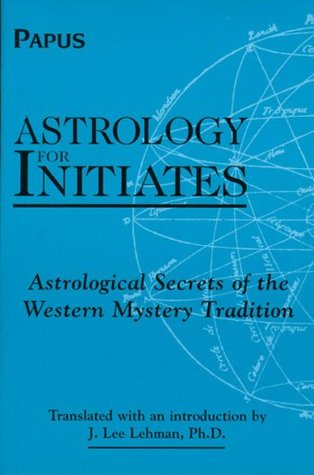Kindle Notes & Highlights
by
Papus
Started reading
September 24, 2021
1848, the Spiritualist New Age.
2 The development of occult practices during this period is discussed in detail in Godwin, The Theosophical Enlightenment (Albany: State University Press of New York, 1994).
stationary stars
mobile bodies that promenade through the constellations.
first the Sun, then ...
This highlight has been truncated due to consecutive passage length restrictions.
in observing the sky, people realized that in its course the Sun traversed the constellations, always the same; they noted that the Moon followed the same course, as well as all the other wandering stars, or planets.
This pathway followed by the celestial wanderers through the sky was called the way of the celestial animals, or the divine starry way or zodiac.
zodiac is composed of twelve constellations,
the stationary stars forming the constellations,
the wandering stars moving through the twelve constellations of the zodiac.
The word “fixed” applied to the stars is relative; these stars indeed don't displace individually,
But the sky displaces around the Celestial Pole;
the ancients considered the sky like a large ocean, within which the cons...
This highlight has been truncated due to consecutive passage length restrictions.
The celestial sphere has two Poles; a North or Arctic Pole, and a South or Antarctic Pole.
in the middle of the sphere is the celestial Equator, parallel to the Poles;
six signs of zodiac are above the Equator, toward the North or Arctic Pole,
six beneath the Equator, toward the South or Antarctic Pole.
The sign that is the most northern point of the zodiac is Cancer;
the most southern, closest to the Antarctic Pole, is Capricorn.
In addition to the equator and to the parallel circles in the celestial sphere, there is another circle that passes through Capricorn ...
This highlight has been truncated due to consecutive passage length restrictions.
Cancer and Capricorn, forming the extreme northerly point and the extreme southerly point of the zodiac, constitute the line of the solstices;
two other signs, the eastern point (Aries), and the western point (Libra), constitute the line of the equinoxes.
the grand celestial cross, defined by the line of the equinoxes and solstices, and constituted by four signs, North-South, and East-West; Cancer-Capricorn, and Aries-Libra.
Each one of the twelve signs of zodiac is composed of groups of stars, which, united together, comprise geometrical figures.
each one of the zodiacal signs is also given a glyph


